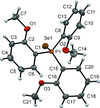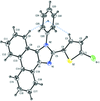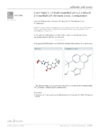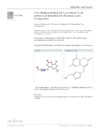issue contents
January 2017 issue

Cover illustration: trans-Acetyldicarbonyl(![[eta]](/logos/entities/eta_rmgif.gif) 5-cyclopentadienyl)[tris(3,5-dimethylphenyl)phosphane-
5-cyclopentadienyl)[tris(3,5-dimethylphenyl)phosphane-![[kappa]](/logos/entities/kappa_rmgif.gif) P]molybdenum(II) was prepared by phosphane-induced migratory insertion of [Mo(C5H5)(CO)3(CH3)] with tris(3,5-dimethylphenyl)phosphane. The structural parameters are similar to those of the related triphenylphosphane complex. In the crystal, the molecules are linked into chains along [010] by non-classical C-H
P]molybdenum(II) was prepared by phosphane-induced migratory insertion of [Mo(C5H5)(CO)3(CH3)] with tris(3,5-dimethylphenyl)phosphane. The structural parameters are similar to those of the related triphenylphosphane complex. In the crystal, the molecules are linked into chains along [010] by non-classical C-H O interactions involving the acetyl carbonyl group. See: Whited, Ruffer, Zhang, Rabaey & Janzen [IUCrData (2017). 2, x170042].
O interactions involving the acetyl carbonyl group. See: Whited, Ruffer, Zhang, Rabaey & Janzen [IUCrData (2017). 2, x170042].
metal-organic compounds


 access
access

 access
access

 access
access

 access
accessorganic compounds


 access
access

 access
access

 access
access

 access
access

 access
access

 access
access

 access
access

 access
access

 access
access

 access
access

 access
access

 access
access

 access
access

 access
access

 access
access

 access
access

 access
access

 access
access

 access
access

 access
access

 access
access

 access
access

 access
access

 access
access

 access
access

 access
access

 access
access

 access
access

 access
access

 access
access

 access
access

 access
access

 access
access

 access
access

 access
access

 access
accessaddenda and errata
 access
access access
access

 journal menu
journal menu





















































![[publCIF]](/logos/authorchecklist11.gif)





